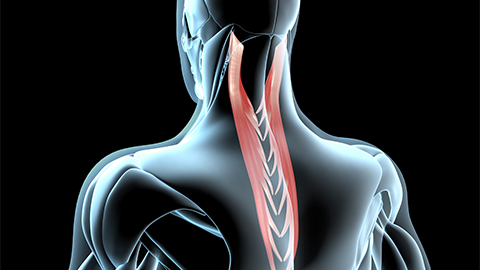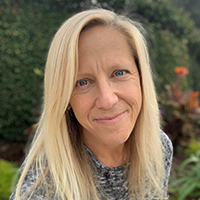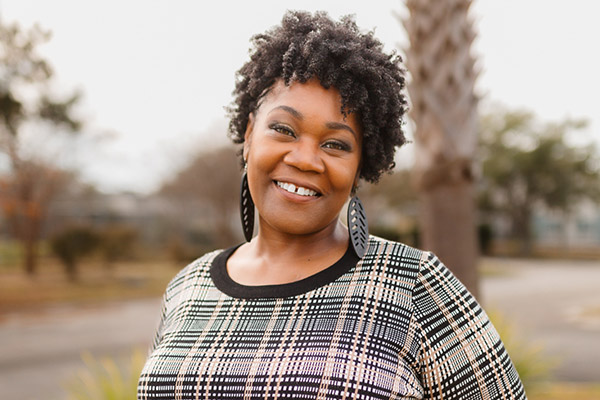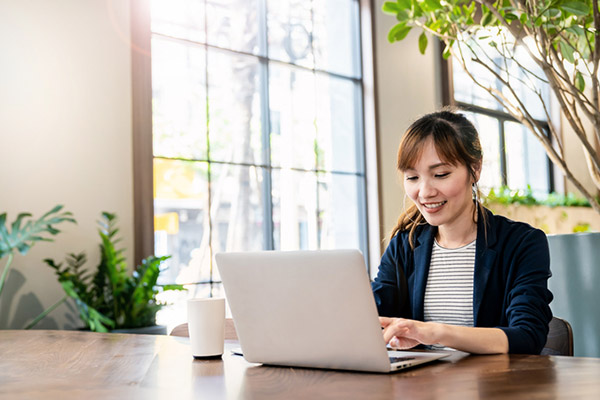08/17/2023

There are those that influence and those that are influenced. And in the body, muscles fall into the same predicament. In this episode of The Rebel MT, Allison uncovers the splenius capitis and splenius cervicis, discusses which muscles influence them, and explores ways to help them be their own muscles.
Contact Allison Denney: rebelmt@abmp.com
Allison’s website: www.rebelmassage.com

Rebel Massage Therapist: http://www.rebelmassage.com
AnatomySCAPES: www.anatomyscapes.com
Rebel Massage Therapist
My name is Allison. And I am not your typical massage therapist. After 20 years of experience and thousands of clients, I have learned that massage therapy is SO MUCH more than a relaxing experience at a spa. I see soft tissue as more than merely a physical element but a deeply complex, neurologically driven part of who you are. I use this knowledge to work WITH you—not ON you—to create change that works. This is the basis of my approach. As a massage therapist, I have worked in almost every capacity, including massage clinics, physical therapy clinics, chiropractor offices, spas, private practice, and teaching. I have learned incredible techniques and strategies from each of my experiences. In my 20 years as a massage therapist, I have never stopped growing. I currently have a private practice based out of Long Beach, California, where I also teach continuing education classes and occasionally work on my kids. If they’re good.
website: www.rebelmassage.com
IG: instagram.com/rebelmassagetherapist
YouTube: youtube.com/c/RebelMassage
email: rebelmassagetherapist@gmail.com
AnatomySCAPES - created by & for hands-on professionals.
As hands-on health professionals, we want more than labeled charts of muscles, nerves, and bones. We crave anatomy education that informs our touch. AnatomySCAPES’ innovative online trainings are bringing vibrant, visual, real anatomy understanding to therapists with the Anatomy LOVERS eBox! Each month, you receive an image-packed, research-loaded mini-course including:
A downloadable and sharable Anatomy ART Card.
Research-loaded, 1-hour Course Webinar in the Anatomy LOUNGE with Nicole Trombley and Rachelle Clauson.
Anatomy ZINE course manual full of images, science and art to help you dig deeper.
Anatomy BRIEF Video that takes you into the dissection lab to see how anatomy LOOKS, FEELS, MOVES, and RELATES to its surroundings.
Really visual, really relevant, REAL anatomy education for hands-on professionals. Go to anatomyscapes.com/ABMP and become an Anatomy LOVERS eBox subscriber today!
website: www.anatomyscapes.com/ABMP
FB: facebook.com/AnatomySCAPES
IG: instagram.com/anatomyscapes
YouTube: youtube.com/@anatomyscapes
email: info@anatomyscapes.com
0:00:00.0 Speaker 1: As hands-on health professionals, we crave anatomy education that informs our touch. AnatomySCAPES innovative online trainings teach you what real anatomy looks like, feels like, and how it relates to its surroundings. Each course includes a vibrant research-based anatomy story, an anatomy video brief from their dissection lab and an engaging webinar with AnatomySCAPES co-founders, Rachelle Clauson and Nicole Trombley. It's relevant real anatomy education for hands-on health professionals and ABMP members save 20%. Go to anatomyscapes.com/abmp and start your journey today.
0:00:40.4 Speaker 1: This episode is brought to you by Rebel Massage deep tissue body butter. Crafted because oil is too slick and lotion absorbs too fast. These organic professional grade body work butters give you the grip you've been looking for. The best techniques in the world can get lost without the right product to support them. Try the Get a Grip version for more specific focused work or the total meltdown version for that grip with a little extra glide made by a massage therapist for massage therapists. Head over to rebelmassage.com to get your grip today.
[music]
0:01:28.2 S1: You know the scenario, the minute you learn about something, the more of a presence it seems to have in your life. You hear a word for the first time, suddenly it's everywhere. Study an illness and seemingly overnight you have the symptoms. Watch a TV show where the characters are eating pasta and pasta for dinner, it is. Don't even get me started on baking shows, but you see my point, the pull of the things and the people that surround us influences how we think and feel and often act in the world. The power of suggestion is at the foundation of all of this. We are inundated by suggestion in nearly every moment of our lives, not only directly with the ads that run on our social media feeds, but also and perhaps even more powerfully by who our friend group is or what our colleagues are like.
0:02:17.8 S1: Sometimes it's obvious like with tastes in movies or music and sometimes not so obvious like in a general framework of competence or anxiety. There are those people who tend to do more of the influencing and those who tend more towards being influenced. But there are also those people that just take up a lot of space, almost like an energy suck. Like there's always that friend that walks into the room and immediately the energy level goes up. Maybe it's good, maybe it's bad, but it's intense either way, and you feel it. In any scenario, we are as humans interacting and therefore susceptible to the world around us. Groupings of muscles are not very different from groupings of people, including how they affect each other. We can be happy if our peers are happy, relaxed, if our peers are relaxed or develop healthy habits if we hang out with people who eat right and exercise, or we can definitely be tense if our peers are tense.
0:03:13.0 S1: I mean, one text chain about what happened in the news today can send a whole slew of people into a tizzy, but also under the skin and in and among themselves, muscles have an impact on each other. It's a lot more direct too, where we may feel a vibe, they feel an actual tug at the physical connective tissue that's meandering its way around every fiber and fascicle. So if one muscle decides to clamp down, those around it will feel the force, kind of like the warping effect a black hole has to anything that gets close to it except not that extreme. I mean, if one muscle decides to glitch or panic, it doesn't take long for the others to follow suit. It can be a frustrating situation for a body worker with the many combinations of movements coupled with the sheer volume of actual moving parts, there are a hoard of reasons why any muscle can become discombobulated. Then bringing the others down with them is just a matter of time, and nowhere in our anatomy is this more true than in the neck.
[music]
0:04:17.4 S1: There are two muscles in particular that seem to fly under the radar and are highly influenceable and easily persuaded. The splenius capitis and the splenius cervicis. In a recent episode, The Paraspinals Explained, I likened them to a pair of ribbons hanging down from a bonnet that tie together loosely at the back, just below the neck. The word splenius does come from the Greek word Splenion, meaning bandage or patch. And you know, ribbons are not far from bandages, but I wanna dive into their anatomy before I detail their devious physiology. Technically, they don't drop down like ribbons or bandages. They originate at the spine and reach up and out or superiorly and obliquely to grab onto more spine and eventually the base of the skull. As a broad overview, they run alongside each other, but the splenius capitis is layered slightly above the splenius cervicis, which makes sense because the skull or capitis or where you put your cap is superior to the cervical spine.
0:05:13.3 S1: Side note, the word cervicis refers to the neck, as does the word coli, which sometimes the splenius cervicis is referred to as the splenius coli. But I'm sticking with cervicis for today. So, let's break it down. The splenius cervicis is one of those muscles that starts at the spine and ends at the spine. It ventures out from the spinous processes of T3-T6 to insert onto the transverse processes of C1-C3. So, this one starts medial about low to mid scapular range and lands just marginally lateral behind the ear, just below the skull on the cervical spine. The splenius capitis on the other hand, is one of those muscles that uses the nuchal ligament as an attachment site along with the serratus posterior superior and the trapezius muscles. Specifically, the origin is at the nuchal ligament and the spinous processes of C7-T3.
0:06:07.6 S1: It then reaches out and up to secure itself onto the mastoid process of the temporal bone and the lateral one third of the superior nuchal line of the occipital bone. So, really between where the SCM and the upper traps in the semispinalis capitis attached to the skull. Now let's really look at them. The orientation of these two muscles places them in between a lot of things, and that for the most part keeps them out of the spotlight from superficial to deep, they are sandwiched between many layers of tissue, the overbearing and presumptuous upper traps, levator scapula, SCM, and rhomboids throw these two into the shadows and underneath the wiry and ornery scalings and suboccipitals do not sit around very quietly. The splenia muscles seem to have to reach around to grab onto the bones and tissues that anchor them, and they appear to almost step aside and make way for their loud neighbors.
0:07:00.3 S1: They definitely, I would argue, are amenable to suggestion. Their orientation is what dictates their physiology. In other words, all of that nestling in between muscles and attachment sites keeps them hidden and so their actions aren't very bold or rebellious. Technically speaking, they should both of them, they have the same actions. Unilaterally rotate and flex the head and neck to the same side, and bilaterally extend the head and neck. What that means is if either of these muscles contracts on one side, the head and neck will turn or bend to that same side. But if either one of these muscles decides to partner up with its mirror twin from across the spine and contract at the same time, they will lift the head and neck up from looking down. The problem is a lot of muscles have these same actions. I will not list them all right now.
0:07:50.1 S1: That would make for a very boring podcast. But I will say that there are, at my last count, 15 muscles that extend the head and neck, 10 muscles that rotate the head and neck to the same side. Seven more that rotate to the opposite side, and 15 muscles that laterally flex the head and neck. I challenge you to list them all and get to know them a little bit better, and if you wanna one up yourself, I challenge you to draw them. This will boost your anatomy knowledge for sure. My point is of all the muscles entangled throughout the neck region, the splenius capitis and cervicis are more likely to get lost in the shuffle. They will tense up when those around them tense up. They will let go when others lead the way and they will stay out of the spotlight so they don't often get called out.
0:08:32.9 S1: When a client complains of a stiff neck or a limited range of motion, it's easy to pay attention to the bigger players. That doesn't mean the splenia pair doesn't deserve a little attention. Try this, with your client supine, cup one hand underneath their head so that you can move their head around freely. Let's say for the purposes of talking you through a technique via a podcast and not with a visual aid of a video that this is your right hand. Use your free hand or your left hand in this case to palpate the upper traps and the levator scapula. These will be your two biggest guides when it comes to locating both of the splenia muscles. With your left hand position the flat pads of your fingertips into the upper traps, an inch or two under the base of the skull. Use your right hand to pull the back of your client's head towards you lowering their chin to their chest.
0:09:24.3 S1: This pulls the posterior fibers into a stretched position, which gives you a better grasp on where the fibers are. Follow the upper traps out laterally until you come to the edge of that muscle. At this point, sink in medially and into the taut splenius capitis muscle. Once you have located it, use your right hand to guide the back of your client's head back down towards their shoulders so that their chin turns upwards towards you. Keep your pressure into the splenius capitis as you play around with rotating their head to the left, softening the fibers and then rotating to the right, stretching the fibers. Some gentle myofascial gliding or circular friction here may do the trick. As for the splenius cervicis, this one is a little trickier. Position your left hand further down along the neck towards the shoulder. You will have to work through the upper and middle trap fibers here, but if you reposition the scapula, you will find your way a little more easily.
0:10:16.5 S1: Ask your client to lift their left arm up off the table and lay it across their body. They can rest there or use their left hand to grab their right arm. Just be sure they're keeping their shoulders relaxed. The only muscles they should be using is the ones in their fingers. From here, walk your fingers down the lateral neck from the posterior border of the levator scapula towards the spine. If you walk down too far, you've reached the rhomboids, which isn't a bad thing. The splenius cervicis does extend all the way down to T6, remember. You should not have to sink too deeply though, as these layers tend to be thin. But once you are here, use your right hand again to play around with the movement of the client's head and neck. If you are on the splenius cervicis and the pressure feels relieving to the client, this can be one of those teachable moments.
0:11:00.9 S1: It feels to them like you're working on their back, but they're confused because they came in complaining of neck pain. Ah, the power of anatomy knowledge. Becoming acquainted with the quiet subtle world of the splenia muscles can be a handy tool to have in your pocket. Are they back muscles? Are they neck muscles? Are they part of the paraspinals? I say yes, they are all of the above, but the bigger question about how to give them a voice when they may be so used to following the suggestions of the muscles around them is the better one to ask. Maybe it's not about turning them into influential muscles. Being an influencer definitely does not create internal peace, but the work that we do is about finding balance. So for muscles that are not used to making their own decisions, giving them the space to figure out who they are and what they can do can be the start of a powerful journey.
0:11:53.2 S1: Navigating your way through the noise of the big names of the neck to find the splenius capitis and cervicis is like snapping the phone out of the hands of a teenager. Give them a moment to take in the world that they might not have noticed and then just see what they can do. And here we are, the end of the episode. Thank you to the extraordinary crew over at ABMP for helping me get my words into your ears. And if you wanna get any of your words into my ears or more accurately into my brain via my eyeballs from a computer screen, drop me a line at rebelmt@abmp.com. That's R-E-B-E-L-M-T@abmp.com. I always wanna hear your questions, comments, suggestions, or salutations. Also, if you're interested in checking out anything else I'm doing, head over to rebelmassage.com where you will find all sorts of fun things to click on, like homemade organic products for your practice. Cool links to continuing education classes, thoughts I have typed up and posted here and there and other Rebel Massage Dabblings.
[music]
0:12:54.8 S1: Members are loving ABMP five-minute muscles and ABMP pocket pathology. Two quick reference web apps included with ABMP membership. ABMP five-minute Muscles delivers muscle specific palpation and technique videos, plus origins, insertions, and actions for the 83 muscles most commonly addressed by body workers. ABMP pocket pathology created in conjunction with Ruth Werner puts key information for nearly 200 common pathologies at your fingertips and provides the knowledge you need to help you make informed treatment decisions. Start learning today. ABMP members, log in at abmp.com and look for the links in the featured benefits section of your member homepage. Not a member? Learn about these exciting member benefits at abmp.com/more.





